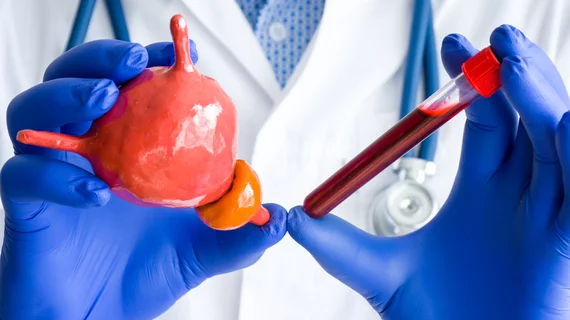Annual MRI surveillance of low-risk prostate cancer drops biopsies while preserving life expectancy
Yearly MRI surveillance of patients with low-risk prostate cancer can drop unnecessary biopsies while also preserving life expectancy, according to a new analysis published Tuesday.
The disease is one of the most common and deadly cancers in the U.S., often appearing in a less-severe form that requires “watchful waiting” from physicians. However, there is little consensus around the ideal intervals and makeup of such check-ins, imaging experts wrote in Radiology.
Hoping to provide clarity, New York University researchers created a mathematical model, evaluating the cost-effectiveness of several prostate cancer management strategies, with and without imaging. An annual MR approach bubbled to the surface, resulting in greater gains compared to less-frequent imaging (or none at all).
“The use of active surveillance with biopsy decisions guided by findings from annual MRI reduces the number of biopsies while preserving life expectancy and quality of life,” Stella Kang, MD, with NYU Grossman School of Medicine’s Department of Radiology, and co-authors concluded. “Biopsy in lesions with PI-RADS scores of 4 or greater is likely the most cost-effective [active surveillance] strategy for men with low-risk prostate cancer who are younger than 70 years,” they added.
To reach their conclusions, Kang et al. simulated outcomes using several surveillance strategies. Those included watchful waiting (no testing unless symptomatic disease developed), prostate-specific antigen and annual biopsy without MRI, and PSA coupled with imaging and various thresholds for biopsy. They also determined quality-adjusted life years and cost-effectiveness ratios, among other success metrics.
For the baseline case of a 60-year-old man, all MRI strategies extended such life years compared to watchful waiting or imaging-free surveillance. Annual MRI, for instance, added 16.19 quality-adjusted life years, while annual biopsy with no MRI spelled 16.14 and watchful waiting resulted in a gain of 15.94. Annual MRI surveillance with a Prostate Imaging Reporting and Data System score of at least 4 as a threshold for repeat biopsy produced the highest economic value, the authors noted, yielding 42% fewer lifetime biopsies.
You can read more about their study in the Radiological Society of North America’s flagship journal here.

